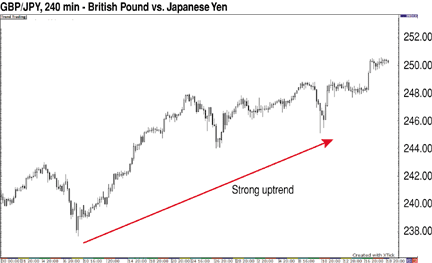Any Secrets To Trading The Trend?
Three Trend Trading Techniques
The currency market is known to be one of the best trending markets in the world. Here are three strategies for entering and exiting trends to maximize profit and minimize risk.
Imagine that centuries ago, a pilgrim set out on a mission to discover the secret of trading. He passed through deserts, thirsty for truth more than water. He descended into valleys where he met despair and then rose again more determined than ever. Finally, he scaled the steep walls of a massive mountain and met a teacher whose wisdom was sought by even the mightiest of traders. And when asked the secret of trading, the master teacher spoke only these words: "The trend is your friend. Never trade against it."
And thus a myth was created. Mountains of trading literature have been produced about this one statement. But is it true?
TREND TRADING AS YOUR WORST FRIEND
I have found that the truth about trend trading is more complicated. Trading is deeper than just a platitude, and the simple repetition of a falsehood doesn't make it true. The worst lie that we can tell is the one that we tell ourselves, and in this case, if you convince yourself that the trend is your friend and it must be trusted at all costs, then you run the risk of great disappointment and huge drawdowns.
For example, what if you bought the GBP/JPY at 252.00 in the summer
of 2007? Let's take a look at Figure 1. That looks like a spectacular trend.
Let's buy the pair! Let's see what happens next (Figure 2). Whoops! The
trend wasn't too friendly. In summer 2007, I bought the GBP/JPY near the
exact top and found that the trend was very unfriendly. To sum it up, the
trend can be your friend, but when the trend gets angry, your friend knows
you well enough to do terrible things to you.

...Continued in the October issue of Technical Analysis of STOCKS
& COMMODITIES
Excerpted from an article originally published in the October 2008 issue of Technical Analysis of STOCKS & COMMODITIES magazine. All rights reserved. © Copyright
2008, Technical Analysis, Inc.
Return to October 2008 Contents